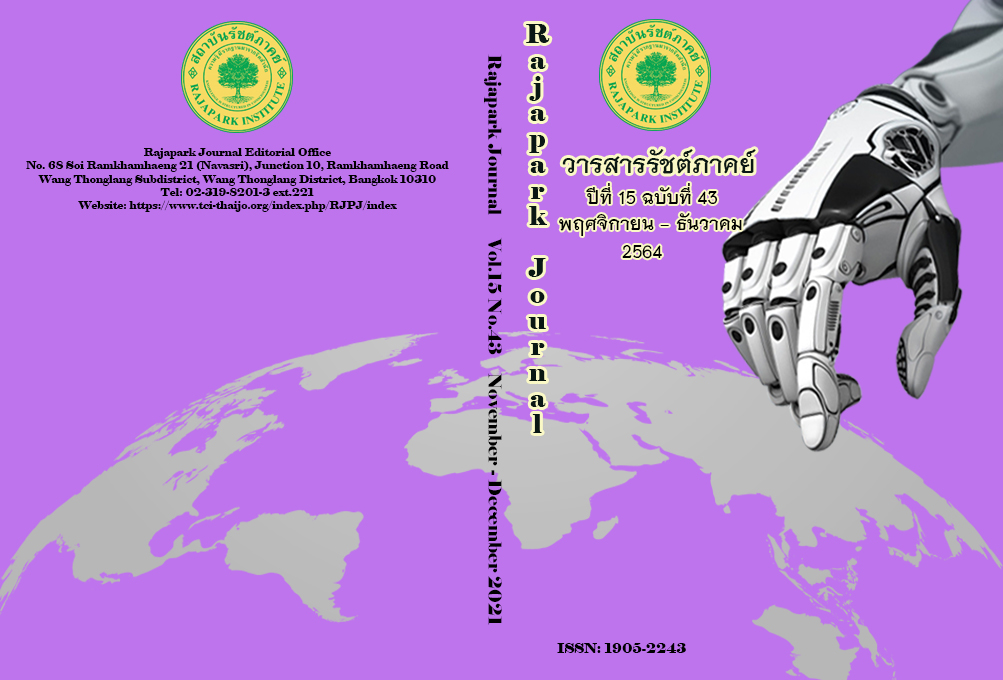Organizational Communication Behavior of Employees in Boonrawd Brewery Company Limited Headquarter
Main Article Content
Abstract
The purposes of this quantitative research were (1) to study the communication behaviors of employees and (2) to compare the different backgrounds of communication behaviors of employees. The population consisted of employees at the Boonrawd Brewery Company Limited Headquarter. The samples were 278 informants. The research instrument was a questionnaire. The reliability was 0.914. The statistics used to analyze the data were percentage, mean, standard deviation, independent sample t-test, and one-way ANOVA. The results of the research were found as follows: 1. The communication behavior of employees in Boonrawd Brewery Company Limited Headquarter was at high level in overall. 2. The comparison of the communication behaviors of employees in Boonrawd Brewery Company Limited Headquarter classified by gender, marriage status, and salary showed no statistically significant difference. Meanwhile, the level of communication behavior of employees in Boonrawd Brewery Company Limited Headquarter, classified by age, education, duration of work, and position was statistically significant at the 0.05 level.
Article Details
Views and opinions appearing in the Journal it is the responsibility of the author of the article, and does not constitute the view and responsibility of the editorial team.
References
Berlo, D. K. (1960). The Process of Communication; An Introduction to Theory and Practice. New York: Holt, Rinehart and Winston.
Chantrapirom, T. (2014). Effective Communications during the Millennium. Journal of Rattana Bundit University, 9(1), 89-99.
Jamchomroon, B. (2015). Communication Climate in Workplace, Communication Process, and Social Media Affecting Communication Efficiency of Private Company’s Employees in Bangkok(Master of Business Administration). Bangkok University.
Krejcie, R. V., & Morgan, D. W. (1970). Determining Sample Size for Research Activities. Educational and Psychological Measurement, 30(3), 607-610.
Kriangtaweesup, P., & Nimchit, S. (2019). Communication’s Pattern Relating Work Efficiency within Organization: A Case Study of Public Debt Management Office. Veridian E-Journal, Silpakorn University, 11(3), 3374-3394.
Mangkornsaksit, C. (2013). The Official’s Opinions towards Communication in Organization: A Case Study of Nontavej Hostpital(Master of Business Administration). Dhurakij Pundit University.
Panangkaew, K. (2019). The Study of Organizational Communication Behavior in Daxin Company (Thailand) Limited. Journal of Suvarnabhumi Institute of Technology (Humanities and Social Sciences), 5(2), 281-297.
Pulputtapong, N., Dokyam, P., & Wantanakomol, S. (2016). The Study of Internal Communication Behavior in Industrial Organizations. Journal of Humanities and Social Sciences, Rajapruk University, 2(1), 24-35.
Sapappong, O. (2020). Internal Organization Communication Affecting the Efficiency of Academics’ Performance of Southeast Asia University. Rajamangala University of Technology Tawan-ok Social Science Journal, 9(2), 119-127.
Sirirat, C. (2015). Problems of Communication among Staff at Central Library, Srinakharinwirot University. Bangkok: Srinakharinwirot University.
Srisa-ard, B. (2017). Basic Research. Bangkok: Suweeriyasan.
Swasburi, O. (2012). Behavior and Communication in Organization. Bangkok: Chula Press.
Tancharoen, B. (2019). The Internal Corporate Communication Strategy for Small and Medium- Sized Corporate. Lumpang Rajabhat University Journal, 8(1), 192-205.
Wijitjammaree, N. (2010). Communication in Organization. Bangkok: KU-Press.
Wongsamut, P., Kachentaraphan, P., & Lomchawakarn, P. (2019). Organizational Communication of the Software Industry Promotion Agency (Public Organization). Pathumthani University Academic Journal, 11(2), 314-324.


